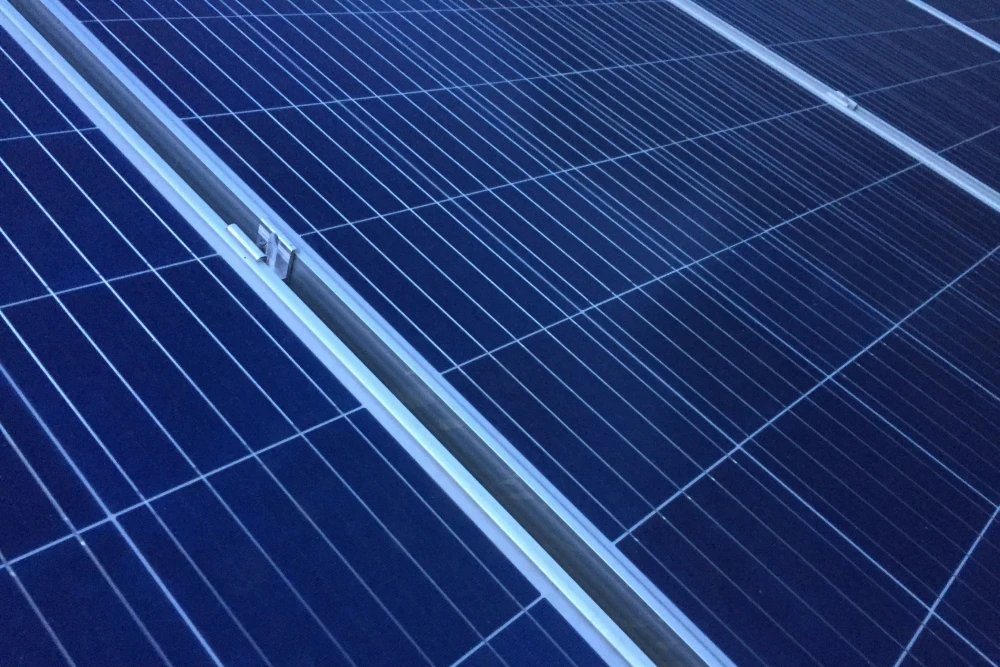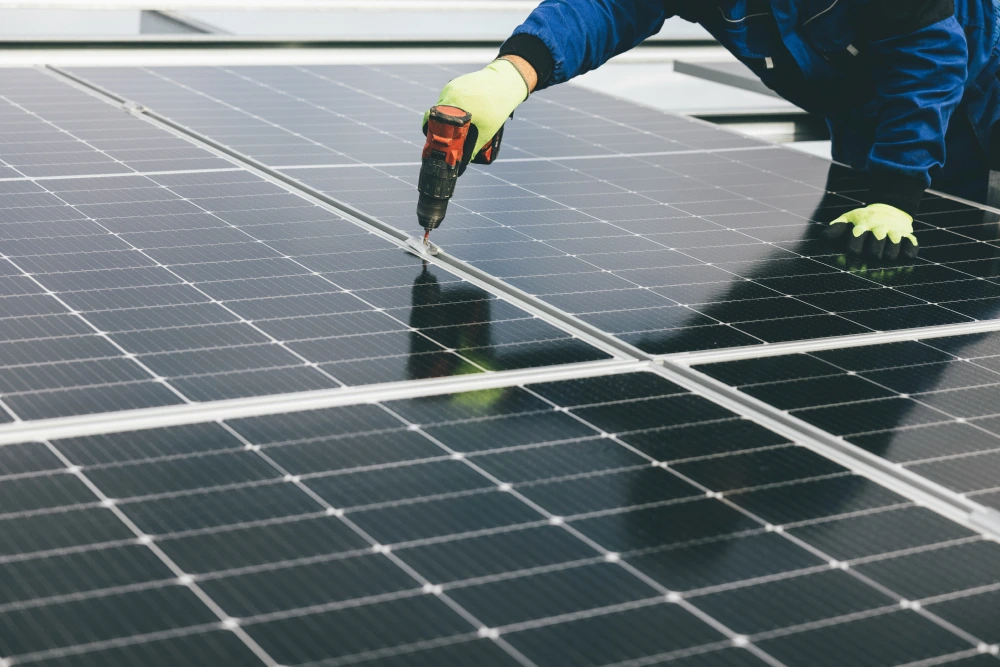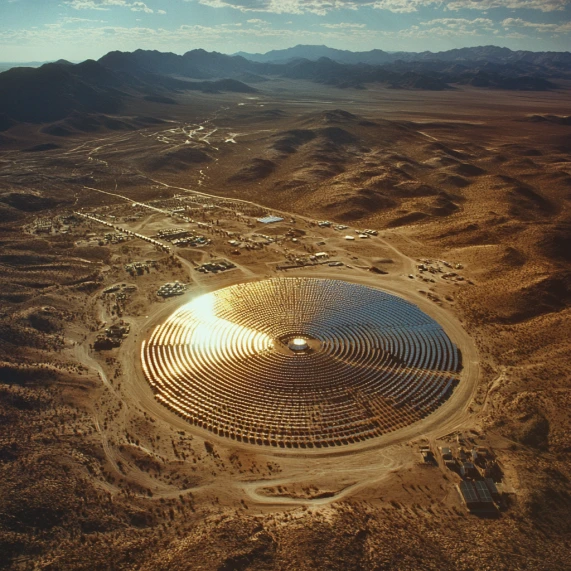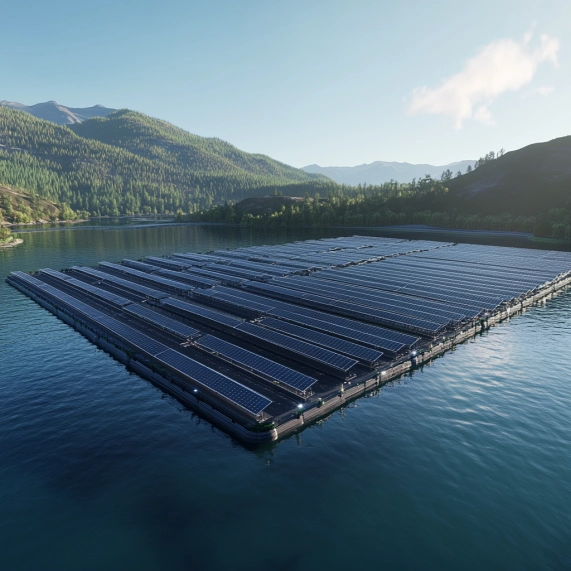The Largest Solar Farms in Texas: 2025
3 minute readTexas's largest solar farms, upcoming projects, and their impact on grid reliability.
Home > Learning Center > Energy Production > Types of Solar Panels Explained
6 minute read • Last update August 2024

There are two main categories of solar panels: photovoltaic and thermal conversion.

Photovoltaic (PV) systems are the most commonly used and widely recognized form of solar panels, as these are typically installed on residential buildings to produce electricity for home use. You can install PV systems on your rooftop or as a ground-mounted solar array. However, rooftop solutions are typically more efficient to maximize the amount of solar energy produced.
Within the category of PV solar panels, there are several subcategories: monocrystalline, polycrystalline, and thin-film solar panels.
Monocrystalline solar panels are one of the most widely used types of PV solar panels and are commonly utilized for residential and commercial installations. The silicon used in their solar cells is made from a single crystal structure with high purity. Their efficiency ranges from 15-22% or higher. Monocrystalline panels are known for performing well in low-light conditions such as cloudy days. They have a lifespan of 25 to 30 years but can last even longer with proper maintenance.
Polycrystalline solar panels are made from silicon, just like monocrystalline solar panels. They are also used in both residential and commercial applications. However, they are manufactured with multiple silicon crystal structures instead of just one. They have a slightly lower efficiency at 13-17%. While they are lower efficiency than their monocrystalline counterparts, they have a similar lifespan and durability and are generally less expensive to produce and install.
The solar cells of thin-film solar panels are constructed much differently in comparison to mono- and polycrystalline panels. They are made by depositing one or more layers of photovoltaic material onto a substrate such as glass, plastic, or metal. The solar cells are thinner which allows the panels to be more flexible and lightweight. Their flexible and lightweight nature makes them appropriate for other uses such as portable chargers or on the curved surfaces of cars and boats. Thin-film solar panels are slightly less efficient with efficiencies ranging from 10-15%. However, they can sometimes perform better in low-light or high-temperature conditions which can make them more versatile. They have a shorter lifespan of 10-20 years and are generally much cheaper to install.
Thermal conversion solar panels are less common than PV solar panels, but they still can serve as a valuable renewable source of energy. Here are the subcategories of thermal conversion solar panels:
Flat-plate collectors are the most common variety of non-concentrating thermal conversion solar panels. They are utilized for space and water heating. A flat metal plate absorbs solar energy which is passed through to metal tubes that transfer heat to water, or for space heating, fans are utilized to move the heat from the absorber into the building.
Concentrated solar power systems rely on mirrors and lenses to concentrate a large area of sunlight onto a small area. The concentration heats a fluid which results in steam. The steam drives a turbine that powers a generator to produce electricity. CSP is more often used for large-scale power plants rather than on residential homes and buildings.

These panels are made up of several rows of parallel glass tubes, each containing an absorber that heats up fluid circulating inside the tube. Similar to flat-plate collectors, these are used for heating water and indoor spaces, but they are more efficient than flat-plate collectors in colder climates.
The above list does not include all types of solar panels out there. Several more types of specialized solar technologies harness solar power. These types of solar panels are less common.
Concentrated photovoltaics work in a similar fashion to CSP panels (mentioned in the section above) in that they both rely on mirrors and lenses to focus a large amount of sunlight onto a smaller area. In the case of CPV panels, rather than heating a fluid to generate steam to power a turbine, the sunlight is focused on PV solar cells. These are highly efficient and can achieve efficiencies up to 40%, much higher than a standard PV system. Due to their reliance on direct sunlight to reach those high efficiencies, they are less common because they do not function as well in low-light environments such as in the evening or on a cloudy day.
Photovoltaic-thermal hybrid systems combine both the photovoltaic effect and thermal conversion processes into one single unit. While they generate power with the photovoltaic effect, they also capture heat. By combining these two mechanisms, these panels can achieve high levels of efficiency.
Dye-sensitized solar cells or DSSCs are a sub-category of thin-film solar cells that rely on organic dye molecules to absorb sunlight. The dyes are responsible for capturing light and initiating the photovoltaic effect. These cells can be made semi-transparent and flexible, so they may be integrated into windows or other building materials. They are less efficient than silicon-based PV cells.
The future of solar energy is looking promising, both globally and locally. The Energy Information Administration estimates that solar energy could be the largest source of electricity by 2050. Meanwhile, here in Texas, renewables are already responsible for approximately a quarter of all in-state electricity net generation.
Perovskite solar cells are a variation of thin-film that are still under development. These solar cells have shown a rapid improvement in efficiency in laboratory settings compared to their traditional thin-film counterparts.
As the name implies, quantum dot solar cells utilize nanoscale semiconductor particles called quantum dots to create the PV effect. The particles can be tuned to absorb different specific wavelengths of light which may potentially allow them to capture more energy from a wide spectrum of light than traditional solar cells. This technology is still in the research and development phase.
Bifacial solar panels capture sunlight on both sides of the panel, increasing overall solar production, and are becoming increasingly adopted in commercial and utility-scale applications due to their higher yield of energy production.
One of the downsides of solar power? They don’t generate energy at night when the sun is not shining. What can humanity do with excess energy generated during the day that would otherwise go unused? Store the electricity in a battery. The development of more efficient, longer-lasting, and cost-effective batteries is a critical development for the continued proliferation of renewable energy across the globe. Currently, these storage solutions can be very expensive to build and install, so they are not as common as one would hope.
Another common criticism of solar farms digs into how much land large-scale installations occupy. While most solar farms are built on land considered undesirable for residential or commercial use, the concept of building a solar farm on water instead has many potential benefits. A solar farm floating on a lake or a reservoir would reduce land use and improve efficiency due to the cooling effect of the water below. At the same time, the solar farms would shade the bodies of water which can reduce evaporation. This could be particularly valuable in areas that face water scarcity.

Integration into buildings refers to integrating solar cells directly into crucial construction materials such as windows, roofs, and facades, allowing the building itself to generate energy without the installation of separate solar arrays. This is a quickly developing and growing market.
While this is by no means a complete list of all types of solar panel technology, we hope that you’ve learned something new by reading this article. If you’re reading this, it’s likely that you’re also interested in renewable electricity plans powered by Texas wind and solar. At BKV Energy, our affordable electricity plans range from 29-100% renewable, plus the Bluebonnet plan includes a robust benefits program. Enter your zip code to explore rates in your area.
Graham Lumley, Digital Marketing Manager at BKV Energy, leads digital and traditional marketing strategies, focusing on educating Texans about the state's deregulated energy market. With over 8 years of marketing experience, he creates content to help consumers understand and save on their energy bills, bringing a fresh and dynamic approach to the industry.

Texas's largest solar farms, upcoming projects, and their impact on grid reliability.

The basics of solar energy Most people are already familiar with the basic principles of how solar energy is harnessed:
Get $50 off your electric bill!
Use code BKVEJOINUS50
Enter your zip code to shop BKV Energy's affordable, fixed-rate Texas electricity plans. Use the promo code for $50 off your electric bill.